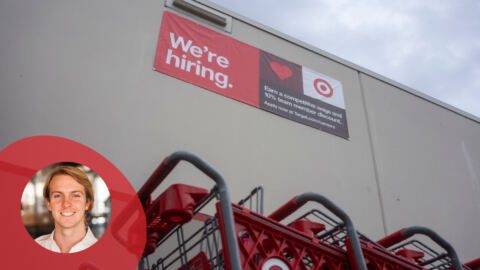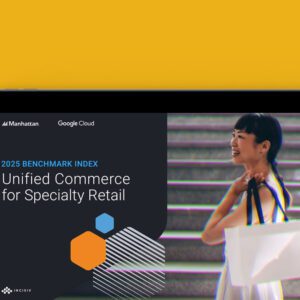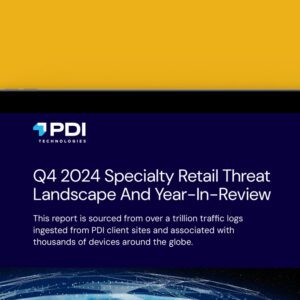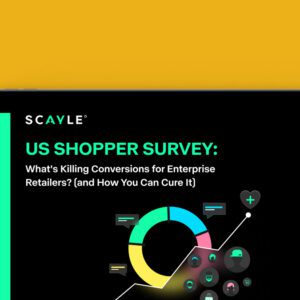 We’ve read the dire headlines about the changing work landscape, claiming that automation and AI are threatening millions of U.S. jobs. On the surface, stories like these paint a dystopian view of workless factories and workerless stores,where machines rule and people are pushed aside in the name of efficiency.
We’ve read the dire headlines about the changing work landscape, claiming that automation and AI are threatening millions of U.S. jobs. On the surface, stories like these paint a dystopian view of workless factories and workerless stores,where machines rule and people are pushed aside in the name of efficiency.
But, changes in technology and automation do not necessarily translate to job cuts. It isn’t all apocalyptic. In fact, there may be some opportunities, or as Deloitte puts it, “almost every job is being reinvented as the workplace evolves to a flexible workforce augmented by software, robots, crowds, and artificial intelligence.”
Now more than ever, industries like retail have an opportunity to empower workers and reinvent the workplace. Flexibility, mobility and efficiency can all be literally put into the hands of the modern worker. Technologies built to strengthen the human worker are shaping the industry and helping to build a smarter, safer workforce.
The augmented workforce — one in which human workers work alongside advanced technologies — offers an opportunity to create more efficient, safe systems where workers can thrive.
Advertisement
Technologies That Empower And Keep Workers Safe
Connected devices are providing real-time data to IT and information systems so frontline workers can accomplish more. This decentralized approach provides a new opportunity for workers who can accomplish more while remaining the same.
For example, glasses can provide instructions through augmented reality. Such glasses can help take the guesswork out of complex processes or train new employees rapidly. They also identify unsafe practices before they turn into habits and lead to injuries or serious accidents. Other examples include vests that alert forklifts when a worker is close, or scanning technology and smart gloves that scan items from a distance — saving time and reducing repetitive strain injuries.
Distractions are one of the main causes of injury, and when such technology enables workers to concentrate fully on the tasks in front of them, rather than the many items vying for their attention, it allows for greater efficiency and makes the industrial workplace safer.
Optimizing The Human Workforce Through New Technologies
Workforce optimization continues to be a focus for many organizations. This is particularly true in a retail environment where the customer expects to be able to get a product anytime, anywhere. Retail is increasingly becoming a logistics business, one that involves a complex supply chain and extremely organized processes to deliver one-day or even same-day shipping.
There are numerous opportunities to enhance the worker experience and their performance as they work to meet these changing demands. The hands-free nature of wearable devices can have a positive impact on worker performance and safety. Ergonomic workspaces can reduce the risk of repetitive strain injury and accidents resulting from fatigue.
Wearables also can be connected to other devices such as tablets, smartwatches or wearable terminals to provide individuals with additional information. Rather than time-consuming treks back to a static information display, workers are immediately provided with the next pick location via their wearable device. Essentially, wearable devices enable individuals to avoid extraneous, tiring activity: every step, every arm movement is directly related to undertaking the task at hand.
By reducing the stress on the body through unnecessary and repetitive actions, wearables ease the strain on the worker, resulting in fewer accidents and injuries from worker error and strain.
How Wearables Are Changing The Nature Of Retail And Logistics
Replacing the traditional point and shoot barcode scanner with a glove with in-built scan functionality offers a number of benefits. The worker has both hands free to pick up items and safely negotiate warehouse locations, sometimes at height. The worker simply presses a button in the glove to scan an item, making the entire process much easier.
Furthermore, there is no need to put down and pick up the device; while scanners are relatively lightweight, even removing this level of additional weight from a worker can have a tangible impact on fatigue. In warehouse logistics where the workflow involves frequently picking up and rearranging items, handheld scanners represent a hazard, as they increase the risk that a worker will drop something on themselves or a co-worker. Wearable technology reduces that risk and, with their hands free, the worker is more able to act in the event of danger.
Other wearables that improve health and safety include those with sensors that emit a signal to alert other workers to an individual’s presence, addressing the risks created by forklifts and other moving infrastructure. This kind of smart technology is especially helpful in noisy warehouse environments where workers may not notice potential hazards.
From frontline workers in warehouses ensuring goods are picked and sent to the proper customer to retail sales associates with information at their fingertips (or even in their glasses), the future of wearables in retail is bright. And when products are designed with the worker front-and-center, we will witness a future where automation and AI are not specters — they are simply side-by-side the human worker.
Tracy Hansen is the President of ProGlove North America. ProGlove develops industrial wearables used by more than 500 renowned organizations in manufacturing, production, logistics and retail. ProGlove was founded in December 2014 after winning the Intel “Make it Wearable” Challenge in Silicon Valley. ProGlove is backed by growth–focused investors Summit Partners, DICP and Bayern Capital. ProGlove employs 200 people from over 40 countries at its two sites in Munich and Chicago.












